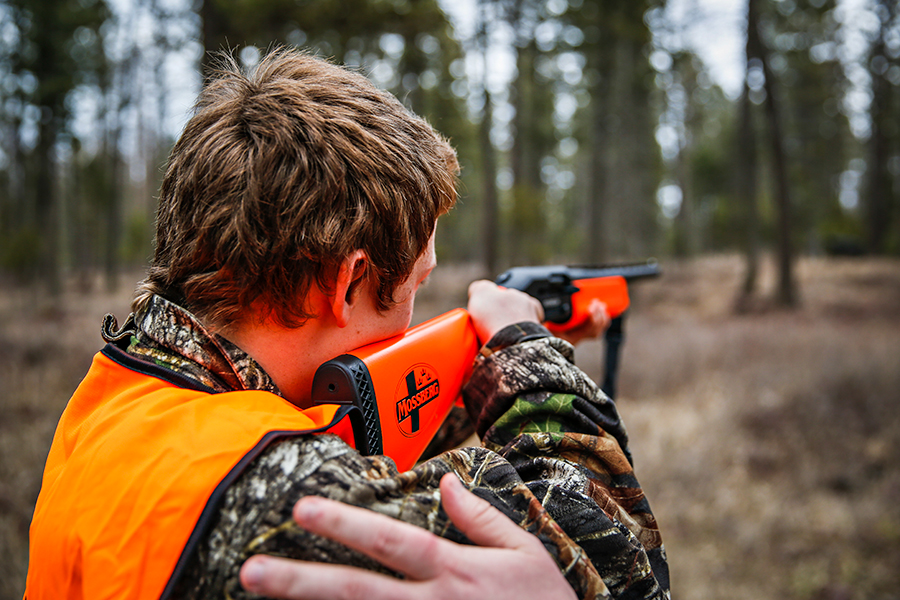Field Guide
Prospects for bagging big game in Northwest Montana are looking up as the season kicks off with more hunters heading afield
By Tristan Scott
The arrival of autumn marks the beginning of big game hunting season, a beloved time of year for the thousands of Montana residents who partake in the rich tradition.
Although the general season for deer and elk doesn’t open until Oct. 24, the archery season for most big game opened on Sept. 5 and the general season for black bears and wolves began Sept. 15. Indeed, Montana boasts one of the longest hunting seasons in the U.S., and Northwest Montana has the second largest tract of public land in the state — 6.2 million acres — and hosts a diverse suite of free-ranging wildlife, including deer, elk, bears, wolves, mountain lions, and furbearers.
The public access available to hunters is augmented by the state’s Block Management Program administered by Fish, Wildlife and Parks (FWP), which coordinates with private landowners to provide hunting access to an additional 7 million acres of private land.
When hunters do head afield this fall they can anticipate a healthy contingent of whitetail and mule deer, the result of a milder-than-normal winter that yielded good adult and fawn survival for white-tailed deer. Overall numbers should be similar or slightly higher than last year, according to FWP Wildlife Manager for Region 1 Neil Anderson.
The relatively mild winter also resulted in increased adult and fawn survival of mule deer, with an increase in young bucks this year. Hunters are reminded to check the regulations as only antlered bucks may be harvested in Region 1 and there are other areas that require a permit to hunt mule deer.
The general season for deer and elk this year runs from Oct. 24 to Nov. 29, beginning after two youth-only days on Oct. 15-16. The five-week hunting season is among the longest in the country, and with ample wildlife and tags available each year, Northwest Montana produces a robust annual harvest.
Before heading out this fall, all hunters must be properly licensed and possess proper tags, with more information on licensing available on the FWP website at fwp.mt.gov/hunting.
Hunters seeking a black bear tag must also pass a bear identification test proving they can differentiate between black bears, which can be hunted, and grizzly bears, which cannot. In addition to online, hunting licenses and permits can be purchased at a number of Flathead Valley locations, including Sportsman & Ski Haus, Snappy Sport Senter and the regional FWP office in Kalispell. A full list of locations is available at fwp.mt.gov.
No matter what hunters are after, being bear aware is once again one of the best ways to ensure a safe return home. Bears are especially active this time of year as they prepare to den for the winter, and hunters are urged to carry bear spray at all times, hunt with a partner if at all possible, and carefully approach carcasses while looking for signs of recent bear activity.
“One thing we try to remind everybody is to use common sense,” Anderson said. “And we hope folks realize that anywhere in Northwest Montana is grizzly bear country.”
Hunters are also urged to take special care to prevent wildfires, even as a recent bit of wet weather has led agencies to roll back previously imposed restrictions on campfires and other high-risk behaviors.
For the latest and most detailed information this hunting season, use the Hunt Planner at fwp.mt.gov under the Hunting tab. The planner allows hunters to search for hunting districts based on species and includes an interactive map.
As for where to find upland game birds, wolves, black bears, mountain lions, deer, elk and more, there are more than 90 million acres of public and private land to search through. Hunting on private land is only allowed if landowners provide consent. For those hunters who need a little stronger nudge to find their animal this year, Anderson had a simple hint.
“About a mile away from a road, your chances improve exponentially,” he said. “Elk have a tendency to avoid roads, especially during the hunting season, and usually that distance (from a road) is about a mile.”